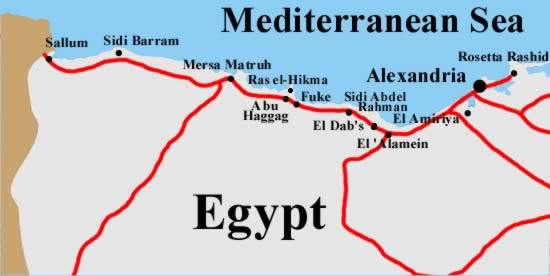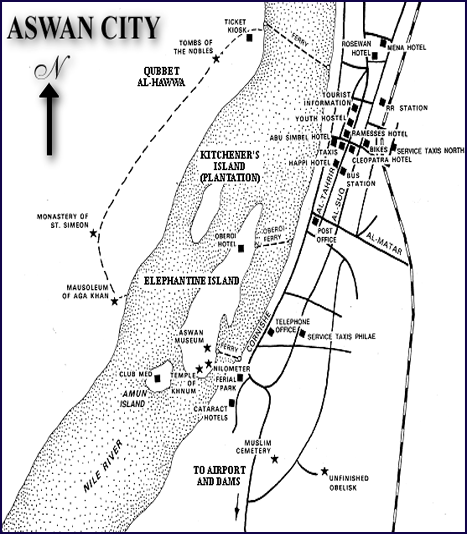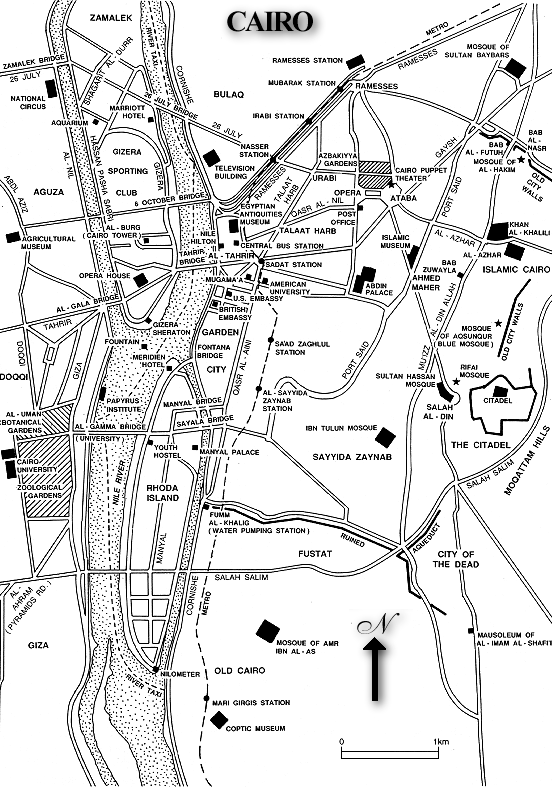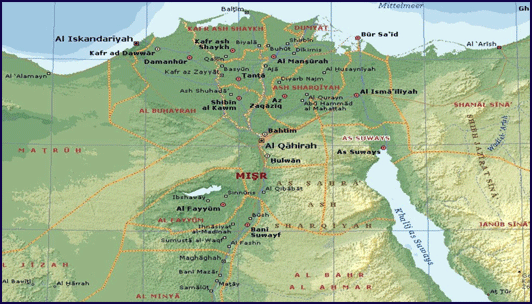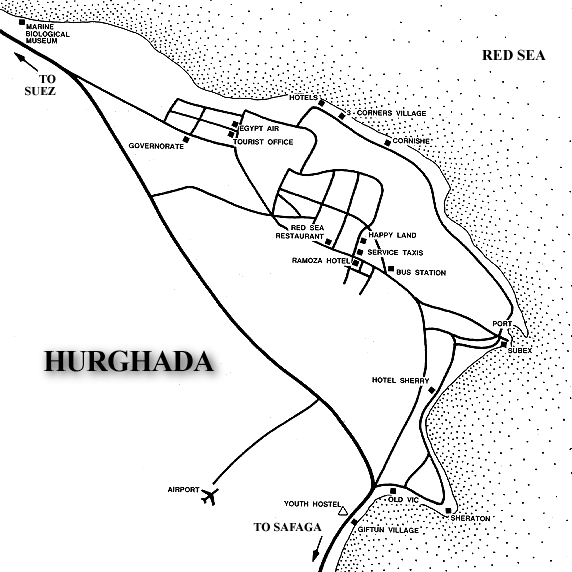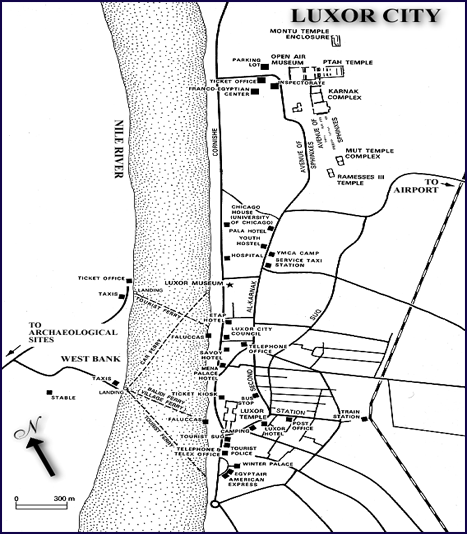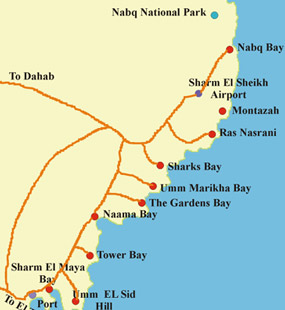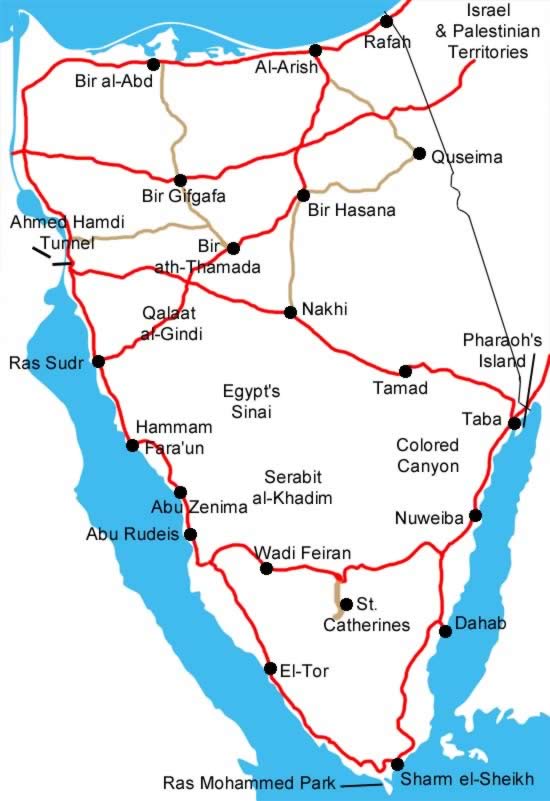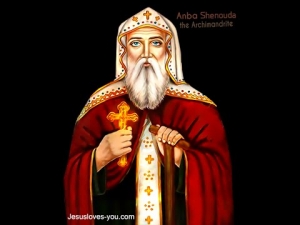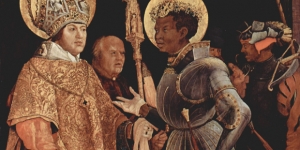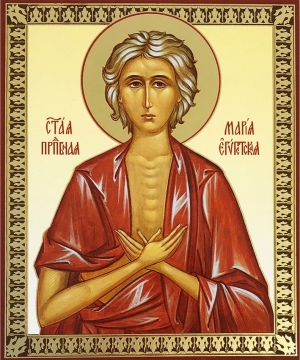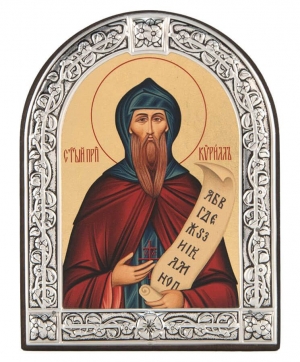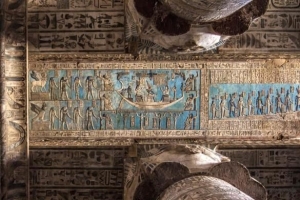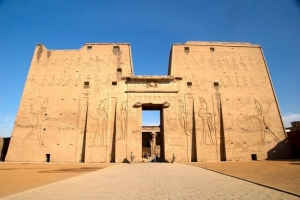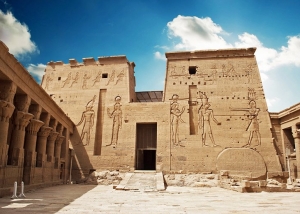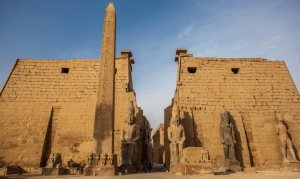+2 0122-345-3028
This email address is being protected from spambots. You need JavaScript enabled to view it.
Super User
Contact Us
Par conséquent, notre objectif n'est pas seulement de vous fournir une liste de casinos, mais aussi de vous récompenser avec un guide immaculé des espaces virtuels!
Bien sûr, les exigences de base qui doivent être incluses dans la liste des casinos en ligne doivent être légales, sûres et équitables. De cette façon, vous n'avez pas à réfléchir à deux fois si votre profil répond aux normes les plus élevées. Ou s'il est facile et clair de retirer vos gains et bonus offerts aux joueurs qui rejoignent le monde des casinos en ligne sous licence. Notre objectif est facile à déterminer: nous aidons ceux qui veulent trouver le meilleur casino en ligne!
Saint Shenouda the Archimandrite
Saint Shenouda the Archimandrite
Saint Shenouda was born around 348 to devout Christian parents and spent much of his early life as a shepherd for his father's small flock. As a youth he accompanied his father on a visit to his uncle Saint Pigol, the abbot of the famed White Monastery. As a result of a vision, Pigol kept the young Shenouda and trained him in the ways of monasticism. In 385 following the death of Pigol, Shenouda was chosen by his fellow monks as the new abbot. The monastery at that time consisted of thirty aging monks, but by Shenouda's death in 466 the White Monastery had grown to over two thousand monks and close to two thousand nuns and covered an area three thousand times its original size.
The charismatic Saint Shenouda brought about a complete reform in Christian monasticism. He had "inherited" a system from his uncle based on the Pachomian Rule, though even more strict and austere. As a result, the followers were few in number and declining. Shenouda created a new Rule that was less stringent and appealed to the backgrounds and natures of the people in the region, who would later join his monastery in droves. He also had his monks utilize their time outside prayer and worship by having them use their skills and old professions for the benefit of the monastery and the community. Thus the monks were engaged in crafts and trades of every type, from clothweaving to shoemaking to pottery. For the first time, the monastery was self-sufficient. He also encouraged literacy amongst the populace by requiring his monks and nuns to be literate and to engage in the art of manuscript copying.
Shenouda's spiritual work in Egypt and the surrounding area made him quite popular and famous within the Egyptian Christian Church, as well as beyond. No doubt as a result of this popularity, he was chosen by Saint Cyril the Great to accompany him to the Council of Ephesus in 431 where Shenouda aided the council in refuting the teachings of Nestorius that, among other things, denied the sacred position and holiness of the Virgin Mary as well as denied the human nature of Jesus. Shenouda was instrumental in preserving the unity of the Church.
Saint Shenouda was also a leader of the peasants under the Greek landlords. He opened the monastery's church to the public and preached constantly to the peasants who came to him on religious and moral issues intending to elevate them from being slaves to confident Christians. He and his monks also defended the peasants who came to him for protection from their oppressive landlords. His heroic deeds have been lauded down through the centuries. Once he risked his life to save a group of captives from the Blemmyes warriors, and even appealed on behalf of the peasants to Emperor Theodosius.
Saint Shenouda died at the age of 118 surrounded by his fellow monks at the White Monastery, singing with them until the moment of his death the praises of God.
Saint Maurice and the Theban Legion
Saint Maurice and the Theban Legion
Saint Maurice was the captain of the Theban Legion, a unit in the Roman army that had been recruited from Upper Egypt and consisted entirely of Christians. Although loyal to the Empire (ruled over by Maximinus Daia and Diocletian), they still remembered the words of Jesus to render to Caesar the things of Caesar, and to God the things of God. During the Bagaude, an uprising of the Gauls, Maximinus marched against them with the Theban Legion as a part of his army. The revolt was quelled, and upon their return to Aguanum (now Saint-Moritz or Saint Maurice en Valais) in Switzerland, Maximinus gave the order that the whole army should give sacrifices to the Roman gods in thanks for the success of their campaign. As part of the celebration, Maximinus ordered the execution of a number of Christian prisoners. The Theban Legion refused to comply with the order and withdrew from the rites, even going so far as to camp away from the rest of the army so as not to be drawn into what they saw as horrifyingly against their beliefs.
Maximinus repeatedly ordered the Theban Legion to comply with his orders, and when they continued to refuse, he ordered the unit "decimated," a practice in which every tenth man was put to death. The Legion was not shaken at all, despite threats of a second decimation, which was performed. Maximinus told those remaining that they would all be killed, but their captain, Maurice, inspired them with the example of the soldiers already martyred, and told them that they were all assured of a place in Heaven for holding fast to their faith. Every last man was beheaded by other soldiers, without resistance. Maximinus even went so far as to carry the executions out against every member of the Theban Legion stationed elsewhere in the Empire from Gaul down to Rome itself.
A number of miracles are attributed to these holy soldiers. In Zurich, it is said that the beheaded Saints Felix, Regula, and Exuperantius rose up, and carrying their heads in their hands, walked to the top of a hill, knelt down and prayed, and finally lay down in final death. On this spot, a great cathedral was built and the image of the three saints carrying their heads appears on the coat of arms of Zurich today.
Saint Maurice is one of the most popular saints in western Europe. There are over 650 sacred places bearing his name in France alone. Over seventy towns bear his name. In the Middle Ages, Saint Maurice was the patron saint of a number of the dynasties of Europe and later of the Holy Roman emperors, many of whom were anointed before the Altar of Saint Maurice at Saint Peter's Cathedral in Rome. King Sigismund of Burgundy donated land for a monastery in his honor in 515. Henry I (919-936) ceded the Swiss province of Aargua in exchange for the Lance of the Saints; and the sacred relic, the Sword of Saint Maurice, was last used in the coronation of Emperor Charles of Austria as king of Hungary in 1916. Saint Maurice's feast day is September 22.
Saint Mary of Egypt
Saint Mary of Egypt
Saint Mary of Egypt, for a great many years, was a prostitute in Alexandria in the middle fourth century. One year she joined a group of pilgrims who were traveling to Jerusalem for the Feast of the Exaltation of the Holy Cross. She joined them not for religious reasons, but in the hopes of finding some customers along the way. Even when she arrived in Jerusalem she persisted in her ways and on the holy day itself even went to the church where the sacred relic was held to ensnare members of the pilgrimage. But when she reached the door, she found she could not enter. Some mysterious force continued to push her away and she sat down in a corner of the churchyard. She was suddenly filled with remorse for her sinful life, which she realized was the reason why she could not enter the church. As she sat crying, she saw a statue of the Virgin Mary, the Mother of Jesus and with a newfound faith and humility of heart she implored the help of the Blessed Mother and permission to enter the church and pray before the sacred wood of the cross. She promised that if her request were granted, she would renounce her previous life in favor of a life of holiness and piety. She stood and approached the church door once more, and found that the force that previously pushed her away, now gently pulled her inside the church. While praying for guidance before the wood of the cross, she heard a voice telling her that across the Jordan River she would find rest. She left immediately, and upon reaching the Jordan she was baptized in a church dedicated to John the Baptist, and the next day crossed the river and walked into the desert.
She lived alone in the desert for the next forty-seven years, until a monk named Zosimus came upon her dwelling. In the custom of monks at the time, he had come out of his monastery to spend Lent (a Christian season of fasting and penance before Easter) in the desert. As soon as she saw him, she called him by name and recognized him as a priest. The two talked and prayed for a long time, during which she told him the strange story of her life. She asked Zosimus to promise to meet her at the Jordan River on Holy Thursday of the following year and to bring her holy communion. Zosimus kept his promise, and brought bread and wine to consecrate into the body and blood of Christ. He arrived at the Jordan and waited; soon he saw Mary coming toward him, walking across the river. After receiving holy communion, she raised her hands towards Heaven and shouted the words of Simeon, "Now thou dost dismiss Thy servant, O Lord, according to Thy word in peace, because my eyes have seen Thy salvation." She then asked Zosimus to return to her dwelling the next year. He did so, but found only her lifeless body and a letter she had written to him. He performed the funerary rites and buried her in the desert aided, we are told, by an angel in the form of a lion. In his prayers he asked that she watch over him from Heaven, and returned to his monastery where he finally recounted to his brothers the story of the holy woman. Her feast day is celebrated by the Eastern Churches on the first of April, and by the Western Churches on the second of April.
Saint Cyril
Saint Cyril
Saint Cyril was the successor and nephew of Theophilus, Pope of Alexandria. As a youth, he entered the monastary of Saint Macarius where he learned the wisdom of the desert monks. Following this, he returned to Alexandria where he was ordained as a priest and rose through the hierarchy until he was finally made Pope of the Egyptian Church. From then on, he began to combat heresy and apostasy, helping to put an end to the Nestorian Heresy and even refuted the Emperor Julian when the latter tried one last time to remove Christianity from the Roman Empire. As Saint Athanasius had fought against Arius, so Cyril now fought against Nestorius. He wrote a letter to Nestorius explaining why his idea of two individual beings in the one person of Christ was heretical, and sent copies to the other Popes of Rome, Antioch, Jerusalem, and Aleppo, as well as to the imperial court. Though Nestorius answered only with contempt, the other letters received favorable replies praising his efforts and offering their support. More letters were written, but Nestorius became more and more stubborn, even trying to antagonize Emperor Theodosius against Cyril.
This controversy eventually became so great that the calling of a synod of bishops seemed the only solution. Theodosius called the First Council of Ephesus to address the heresy, which was held in 431. The bishops present elected Cyril to preside over the council. Though Nestorius was nearby in Ephesus, he refused to appear before the council. Nestorius' beliefs were deemed heretical and a sentence of excommunication was passed by the two hundred bishops in attendance. Six days later, John, Pope of Antioch, arrived with his bishops who had not been able to reach Ephesus in time for the Council. Though they did not believe as Nestorius did, they sided with him against the Council's bishops and deemed him innocent. They met by themselves and issued an accusation of heresy towards Saint Cyril! The Emperor ordered both Saint Cyril and Nestorius confined and the verdicts of both the Council and the Antiochene bishops void. Three legates were dispatched from Rome and when they arrived, they condemned Nestorius and approved of Saint Cyril's decision. The Emperor vindicated Saint Cyril with honor and ordered the exile of Nestorius. The Antiochene bishops contined a minor schism for a time, but made peace with Cyril in 433, agreeing finally with the decision of the Council.
In 1882 Saint Cyril was declared a Doctor of the Church, both for his work defending the faith in the Council of Ephesus as well as for the liturgy that bears his name. According to tradition, the liturgy had been passed down orally beginning with Saint Mark himself, but Saint Cyril completed it and wrote it all down so it would not be forgotten. It is chanted by Christians all over the world during Lent.
The temple of Dendra
Dendara
Dendara is located 8 km west of Qena which lies on the Nile north of Luxor.
Due to Qena Bend, the banks of the Nile lie north and south, rather than east and west of the River.
Qena lies on the north bank, with a bridge to the other side, where Dendara is located.
The approach path to the temple is between two Roman fountains that end at the massive entry gate.
The enclosure walls are mud-brick and date to the Roman era. Within the walls are the temple, two birth houses, a Coptic Basilica, a sanitorium, a sacred lake, and a temple to Isis. The temple has a long history.
There is evidence that Pepi I (Old Kingdom) rebuilt the temple while other texts refer to reconditioning by Thutmose III, Amenhotep III and Ramesses II and III (of the New Kingdom).
Additions were made during the Greek, Roman and Ptolemy periods.
Temple of Edfu
Edfu Temple
Dedicated to Horus, the falcon headed god, it was built during the reigns of six Ptolemies. We have a great deal of information about its construction from reliefs on outer areas. It was begun in 237 BC by Ptolemy III Euergetes I and was finished in 57 BC.
This is not only the best preserved ancient temple in Egypt, but the second largest after Karnak. It was believed that the temple was built on the site of the great battle between Horus and Seth.
The main building, which includes a great Hypostyle Hall, was uncovered by Mariette in the 1860s.
There are numerous reliefs, including a depiction of the Feast of the Beautiful Meeting, the annual reunion between Horus and his wife Hathor.
The reliefs are mostly situated on the inside of the first pylon, and spiritually connect this temple with Hathor’s Temple at the Dendera complex.
During the third month of summer, the priests at the Dendera complex would place the statue of Hathor on her barque (a ceremonial barge) and would thus bring the statue to the Edfu Temple, where it was believed that Horus and Hathor shared a conjugal visit.
Each night, the god and goddess would retire to the mamissi, or berthing house.
There is still an entrance colonnade to the mamissi, and reliefs with considerable remaining color just outside the main temple. These images portray the ritual of the birth of Harsomtus, son of Horus and Hathor.
The pylons of the main Temple are about 118 feet high with typical scenes of the pharaoh in battle with his enemies. Within the pylons is the colonnaded courtyard with distinctive, pared columns, which leads into the great hypostyle hall. But on either side of the courtyard there are gates which lead to an area behind the temple and inside the bounding walls.
Here, there are inscriptions recording donations of land which were probably transferred from demotic documents.
There are also dramatic images depicting the defeat of Seth by Horus. There was an annual ritual called the known as the Triumph of Horus (10 harpoons) which ended in the slaying of a hippopotamus, the symbol of Seth.
The facade of the first hypostyle hall has images honoring Horus and Hathor, and there is an immaculate ten foot tall colossi of Horus as the falcon god here (a matching colossi was destroyed). Beyond the great hypostyle hall is a second, smaller hypostyle hall which leads to a well called the Chamber of the Nile where the Priests obtained pure holy water.
Beyond the second hypostyle hall is the offering hall, followed by the vestibule and finally the sanctuary surrounded by chapels of different gods.
There is a granite naos here dedicated by Nectanebo II, making it the oldest relic in the temple. The front chapel has a depiction on the ceiling showing the voyage of the solar barque through the Twelve Hours of the day, with an inspiring image of the goddess, Nut
Philae Temple
Philae Temple
Philae Temple Complex
(Island from the Time of Re, Pilak)
Philae Temple was dismantled and reassembled (on Agilika Island about 550 meters from its original home on Philae Island) in the wake of the High Dam. The temple, dedicated to the goddess Isis, is in a beautiful setting which has been landscaped to match its original site.
It's various shrines and sanctuaries, which include The Vestibule of Nectanebos I which is used as the entrance to the island, the Temple of the Emperor Hadrian, a Temple of Hathor, Trajan's Kiosk (Pharaohs Bed), a birth house and two pylons celebrate all the deities involved in the Isis and Osiris myth.
The Victorian world fell in love with the romance of the Temple.
But at night you can also visit the Sound and Light Show, a magical experience as floodlit buildings are silhouetted against the volcanic rocks and water surrounding them. So today, Philae is more fun then every before.
Although antiquities on the island date between the 26th Dynasty and the Roman Period, most of the work is from that of the Roman.
This was a time of immense popularity of the Goddess Isis, and this was her island, where pilgrims would come from all over the Mediterranean.
Construction on the island took place over an 800 year span, and it was one of the last strongholds of Ancient Egyptian Religion which continued to flourish here into the 6th Century. When the Temples where finally closed by Justinian in A.D 550, it ended 4,000 years of worship of the pagan gods.
The Philae Temple complex, prior to its removal and restoration, set alongside Biga Island. To the ancient Egyptians, Biga was the sacred mound, the first ground created from Nun out of Chaos. This was the legendary burial place of Osiris.
The earth was considered to be part of his body so that only priests and temple servants were permitted to live there
Luxor temple
Luxor temple
Many festivals were celebrated in Thebes. The Temple of Luxor was the center of the most important one, the festival of Opet. Built largely by Amenhotep III and Ramesses II, it appears that the temple's purpose was for a suitable setting for the rituals of the festival.
The festival itself was to reconcile the human aspect of the ruler with the divine office.
During the 18th Dynasty the festival lasted eleven days, but had grown to twenty-seven days by the reign of Ramesses III in the 20th Dynasty. The procession of images of the current royal family began at Karnak and ended at the temple of Luxor.
By the late 18th Dynasty the journey was being made by barge, on the Nile River. Each god or goddess was carried in a separate barge that was towed by smaller boats.
Once at the temple, the king and his priests entered the back chambers.
There, the king and his ka (the divine essence of each king, created at his birth) were merged, the king being transformed into a divine being.
The temple of Luxor used to be connected to the Karnak Temple via a long stone processional street called a dromos. The dromos was built by Nectanebo I, and originally was lined on either side by sphinxes. In front of the Luxor temple, the dromos is well preserved, and on the way to the entrance one passes by a Roman chapel of burnt brick dedicated to the god Serapis, which was built during the rule of Hadrian. There is a path that leads to the Nile side of the Temple where one enters the complex.
The Temple of Luxor has a great pylon with carved episodes from the Battle of Kadesh when Ramses defeated the Hittites. There is the one red granite obelisk (a twin one is now at the Place de la Concorde in Paris
